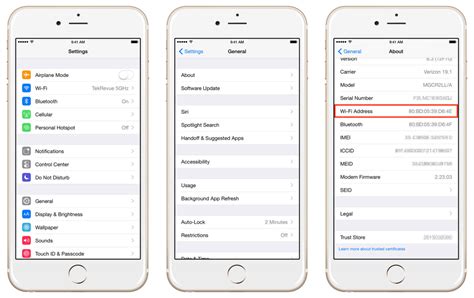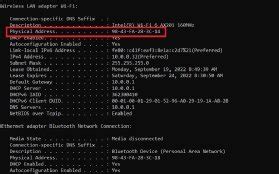Understanding and identifying your Mac address is essential for network configuration, troubleshooting, and security purposes. A Mac (Media Access Control) address is a unique identifier assigned to network interfaces for communication at the data link layer of a network segment. It is used to identify devices within a network and is crucial for the functioning of the network protocol.
Why is a Mac Address Important?

A Mac address is vital for several reasons. Firstly, it helps in identifying devices on a network, ensuring that data packets are delivered to the correct device. This uniqueness prevents data from being sent to the wrong device, even if multiple devices share the same IP address. Secondly, Mac addresses are used for security purposes. For instance, some routers can be configured to allow only specific Mac addresses to connect, adding an extra layer of security to your network. Lastly, when troubleshooting network issues, knowing the Mac address of your device can be helpful in diagnosing and resolving connectivity problems.
How to Find Your Mac Address
Locating your Mac address varies depending on the device you are using. Here are steps for common operating systems:
- Windows: You can find your Mac address by opening the Command Prompt, typing `ipconfig /all`, and pressing Enter. Look for the term "Physical Address" under the Ethernet or Wi-Fi section.
- MacOS: Go to System Preferences > Network > Advanced > TCP/IP. Your Mac address will be listed as the "MAC Address" or "Ethernet ID" under the Hardware or Ethernet tab.
- Linux: The command `ip link show` or `ip addr` in the terminal will display information about your network interfaces, including the Mac addresses.
- Mobile Devices (Android/iOS): For Android, go to Settings > About phone > Status. For iOS devices, navigate to Settings > General > About, and look for the "Wi-Fi Address" or "Ethernet Address" for the respective connections.
| Device Type | Method to Find Mac Address |
|---|---|
| Windows | Command Prompt: ipconfig /all |
| MacOS | System Preferences > Network > Advanced |
| Linux | Terminal: ip link show or ip addr |
| Android | Settings > About phone > Status |
| iOS | Settings > General > About |

Key Points
- A Mac address is a unique identifier for network interfaces, crucial for device identification and network security.
- It can be found using specific commands or through device settings, varying by operating system.
- Knowing your Mac address is helpful for network configuration, troubleshooting, and enhancing network security.
- Mac addresses are typically represented as six pairs of hexadecimal digits, separated by colons.
- Each network interface (e.g., Ethernet, Wi-Fi) on a device has its own unique Mac address.
Changing Your Mac Address

While Mac addresses are assigned by the manufacturer and are unique to each network interface, there are situations where changing or spoofing a Mac address might be necessary, such as bypassing restrictions based on Mac address filtering or troubleshooting network issues. However, this should be done with caution and only when absolutely necessary, as it can cause network conflicts if not done correctly.
Changing a Mac address involves using specific commands or software tools that can modify the Mac address of a network interface. On Linux systems, for example, the `ip link` command can be used to change the Mac address of an interface. Similarly, on Windows, certain network driver settings or third-party software can be used to change the Mac address. It's essential to note that not all devices or network interfaces support changing their Mac addresses, and doing so may violate the terms of service of some networks or ISPs.
Security Considerations
Mac addresses can be used in various security contexts. For instance, Mac address filtering can be used to control which devices can connect to a network. However, this method of security is not foolproof, as determined individuals can spoof Mac addresses. Thus, while Mac addresses are an essential part of network configuration and security, they should not be relied upon as the sole means of security. Instead, they should be used in conjunction with other security measures such as strong passwords, encryption, and intrusion detection systems.
Can I change my Mac address?
+Yes, it is technically possible to change or spoof a Mac address, but this should be done with caution and only when necessary. The process varies by operating system and device.
Why would I need to find my Mac address?
+You might need to find your Mac address for network troubleshooting, to configure Mac address filtering on your router, or for other network security purposes.
Is my Mac address the same as my IP address?
+No, your Mac address and IP address are not the same. The Mac address is used to identify your device at the data link layer, while the IP address is used at the network layer to route data across different networks.
In conclusion, understanding and managing your Mac address is an essential part of maintaining your network’s integrity and security. Whether for troubleshooting, security enhancements, or simply ensuring that your devices can connect to the network, knowing how to find, interpret, and if necessary, change your Mac address is a valuable skill for anyone working with networks.
